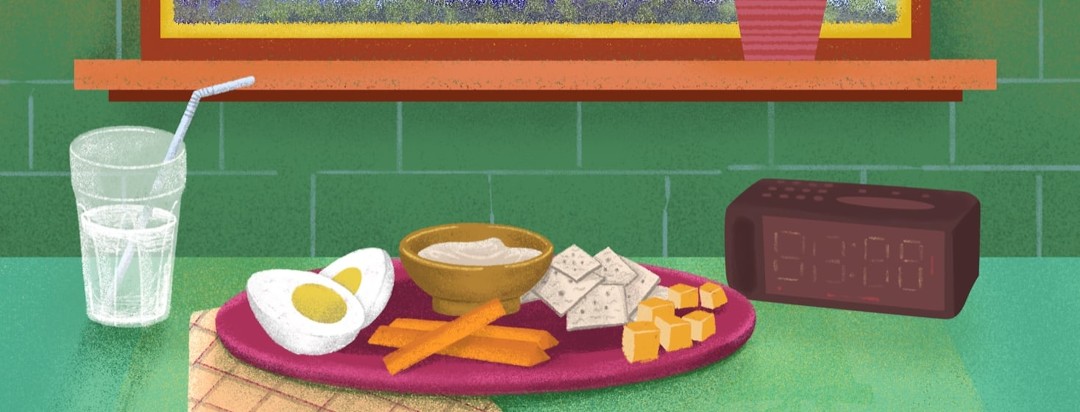Meal Prep Snacks for Better Type 2 Diabetes Management
Snacks can be an Achilles heel when it comes to managing what you eat.
Hunger strikes and suddenly you hear the siren call of the pastry case or vending machine. Before you know it you’re licking sugar-laden frosting off your fingers or filling up on salty, fat-filled chips. Soon after, your blood glucose level is headed up through the roof and you’re feeling the ricochet of hyperglycemia.
One way to better manage snacking with type 2 diabetes is to use meal prep. Prepare healthy snacks in advance and keep them on hand wherever you go. With a snack pack in your bag or desk, you can easily make a healthier choice when your stomach starts to growl.
The basics of meal prepping snacks
The first thing to remember is that a snack is smaller than a meal. It’s made up of fewer calories and less volume. Snacks are meant to keep you from getting hungry between meals and overeating.
The basic recipe for a snack is: veggies + protein + healthy fats + small amount of carbs.
Make protein and veggies the main snack ingredient. They provide nutrients and fiber to fill you up. Healthy fats and a small number of carbs can add flavor. Because some snacks, like nuts, will keep for a while you may not need to meal prep snacks every week. The goal is to prepare enough healthy snacks so that you have something healthy on hand at all times.
Some snack prep ideas for better type 2 diabetes management
Start with a protein. Hard-boiled eggs, cottage cheese, Greek yogurt, cheese, and deli meat are all good places to start. Nuts and seeds bring protein and healthy fats.
Add some crunch and bulk with cut up veggies. Carrots, bell pepper, pickles, and jicama are just some of the veggies that can add crunch, bulk, and nutrition to your snack.
Look for dips that have healthy fats and/or low sugar content. Guacamole and salsa fit the bill. Cream and soft cheeses, in limited amounts, can be a good choice. Hummus and Tzatziki sauce add unique flavor.
Choose fruits that are diabetes-friendly. Berries, clementines, and cantaloupe all have a lower glycemic load. Any of these can be put with Greek yogurt or cottage cheese for a slightly sweet snack. You can also eat fruit on its own, just be mindful of the amount of carbohydrate in the serving.
Look for alternative ingredients that are lower in carbohydrates. Seed crackers, cheese chips, and kale chips can take the place of potato chips or flour-based crackers.
If you must have chocolate, make it dark.High cocoa content (70% or higher) chocolate is more diabetes-friendly than other chocolates that are high in added sugar.
Success tips for prepping snacks
Consider the shelf life of the ingredients you use. Some things keep longer than others and can easily be stored in your car or at your desk for days or weeks. Other snacks will last only a day or need refrigeration.
Use ingredients with no added sugars. Before using nut butter, sauce, or dip be sure to read the ingredient list. Choose the ones that don’t have added sugars.
Look for healthier substitutes. Make healthier versions of your favorite snacks. For example, sliced cucumber with soft cheese spread instead of crackers and cheese. Bake lower-carb using almond flour in place of traditional white flour in cookies or muffins.
Pay attention to portion size, calories, and carb counts. Remember that snacks are meant to be smaller than meals. The energy and nutrition snacks provide are meant to tide you over, not fill you up like a meal. If you decide to use a starchy vegetable, bread, or some other carb-dense ingredient keep the portion in line with your overall eating plan.
Mix it up and make a variety of snacks. Having the same snack over and over again can lead to boredom and make other, less healthy options more tempting. Having a couple of different options in your desk drawer or bag will make it easier for you to stay with your overall eating plan.
Make snacks that support your type 2 diabetes management
Snacks can be part of a healthy diet to manage type 2 diabetes. As with everything you eat, it requires some planning and preparation upfront so that you can make healthy choices more consistently.

Join the conversation